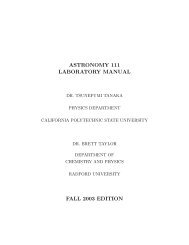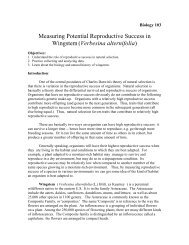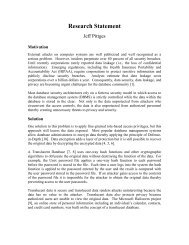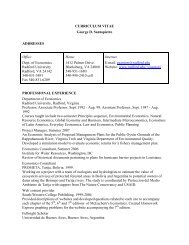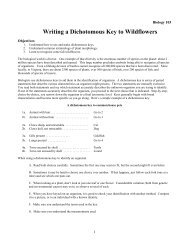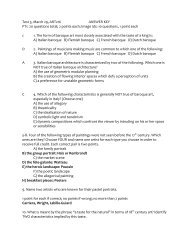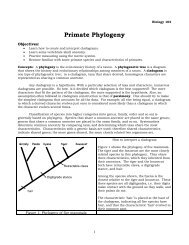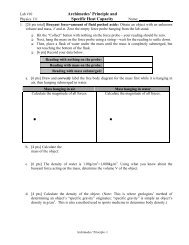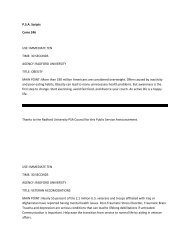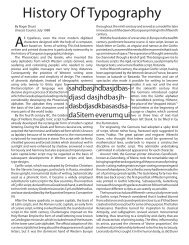A.6 Phases of the Moon
A.6 Phases of the Moon
A.6 Phases of the Moon
You also want an ePaper? Increase the reach of your titles
YUMPU automatically turns print PDFs into web optimized ePapers that Google loves.
36 CHAPTER A. LABORATORY EXPERIMENTS<br />
IV. Activities<br />
Lunar <strong>Phases</strong><br />
1 Turn on <strong>the</strong> light bulb. We are going to pretend <strong>the</strong> bulb is <strong>the</strong> Sun. Hold a ball at arm’s length.<br />
Which side <strong>of</strong> <strong>the</strong> ball is illuminated? Which side is in shadow?<br />
2 In Fig. A.15, shade <strong>the</strong> dark sides <strong>of</strong> <strong>the</strong> <strong>Moon</strong> and <strong>the</strong> Earth. The side facing away from <strong>the</strong> Sun is<br />
always in <strong>the</strong> dark.<br />
3 We are going to measure all angles from <strong>the</strong> direction <strong>of</strong> <strong>the</strong> Sun (0 ◦ ) in <strong>the</strong> counterclockwise direction.<br />
Find <strong>the</strong> angle to <strong>the</strong> <strong>Moon</strong> at each location on <strong>the</strong> orbit.<br />
4 Pretend your head is <strong>the</strong> Earth. The ball is going to represent <strong>the</strong> <strong>Moon</strong>. Hold <strong>the</strong> ball in your hand<br />
and stretch your arm. As you spin counterclockwise, <strong>the</strong> <strong>Moon</strong> orbits around you. Notice that <strong>the</strong><br />
<strong>Moon</strong> is illuminated by <strong>the</strong> Sun from different angles with respect to <strong>the</strong> Earth. At 0 ◦ , your head, <strong>the</strong><br />
ball, and <strong>the</strong> bulb are aligned in a straight line. You can see only <strong>the</strong> dark side <strong>of</strong> <strong>the</strong> <strong>Moon</strong>. It is <strong>the</strong><br />
new moon.<br />
5 Now rotate counterclockwise by 45 ◦ . You should be able to see a crescent moon. Sketch <strong>the</strong> phase and<br />
label <strong>the</strong> phase. Keep rotating by 45 ◦ , and for each angle, sketch and label <strong>the</strong> phase.<br />
New <strong>Moon</strong><br />
0°<br />
Full <strong>Moon</strong><br />
45° 90° 135°<br />
180°<br />
225° 270° 315°<br />
Figure A.16: Lunar phases and corresponding angles between <strong>the</strong> Sun and <strong>Moon</strong>.<br />
What time does a full moon rise?<br />
We can use Fig. A.15 to find what time <strong>the</strong> <strong>Moon</strong> <strong>of</strong> a particular phase rises or sets. Also, we can find <strong>the</strong><br />
time <strong>of</strong> <strong>the</strong> transit. The transit is <strong>the</strong> time when <strong>the</strong> <strong>Moon</strong>, or any celestial body, is exactly on <strong>the</strong> local<br />
celestial meridian (LCM).<br />
1 The local time is defined by <strong>the</strong> position <strong>of</strong> <strong>the</strong> Sun in <strong>the</strong> sky. When <strong>the</strong> Sun is on <strong>the</strong> LCM, it is <strong>the</strong><br />
local noon. From Fig. A.15, find <strong>the</strong> local time for <strong>the</strong> transit for each lunar phase.



